Two Ann Arbor visits by the Art Ensemble of Chicago were documented on recordings made 46 years apart

The 2018 Edgefest at Kerrytown Concert House was the launchpad for a year-long celebration of the legendary avant-garde jazz collective Art Ensemble of Chicago. The group not only performed at the long-running, annual Ann Arbor festival, it recorded a studio album during its stay here.
“This is the first performance of this 50th-anniversary project," Deanna Relyea, Edgfest’s artistic director, told me last year for a Pulp post. Ensemble co-founder "Roscoe [Mitchell] has written music for this group based on music written for the Art Ensemble years ago by Joseph Jarman, Malachi Favors, and Lester Bowie. (Bowie and Favors are deceased; Jarman is retired.)
The recorded fruits of the Art Ensemble's Ann Arbor labor, We Are on the Edge: A 50th Anniversary Celebration, was released in April on CD/digital via Pi Recordings and on vinyl in July via Erased Tapes. One part of the We Are on the Edge is live from the Kerrytown Concert House and the other section is music recorded at Big Sky, with University of Michigan professor Stephen Rush -- a longtime Mitchell collaborator -- conducting the large ensemble.
“I have been asked to conduct two pieces by Roscoe Mitchell and one by Don Moye," Rush told me last year. “I’m also providing instruments from my own collection for [percussionist] Don Moye. No question I would get involved a little bit in editing the scores, too. These things are extremely fluid and not at all like recording some of my other works like symphonies and chamber stuff. And the musicians are all amazing readers and amazing improvisers, which makes it really exciting.”
We Are on the Edge isn't the first Art Ensemble record made in Ann Arbor. Recorded on September 9, 1972, at the Ann Arbor Blues and Jazz Festival, Bap-Tizum is a free-wheeling, politically charged performance. (The first track on the LP is a band introduction by John Sinclair.)
Check out music from both albums below as you buy tickets to the 2019 Edgefest, which happens October 16-19:
Mind-Body Connection: Nora Venturelli's "Body of Work" at WSG Gallery
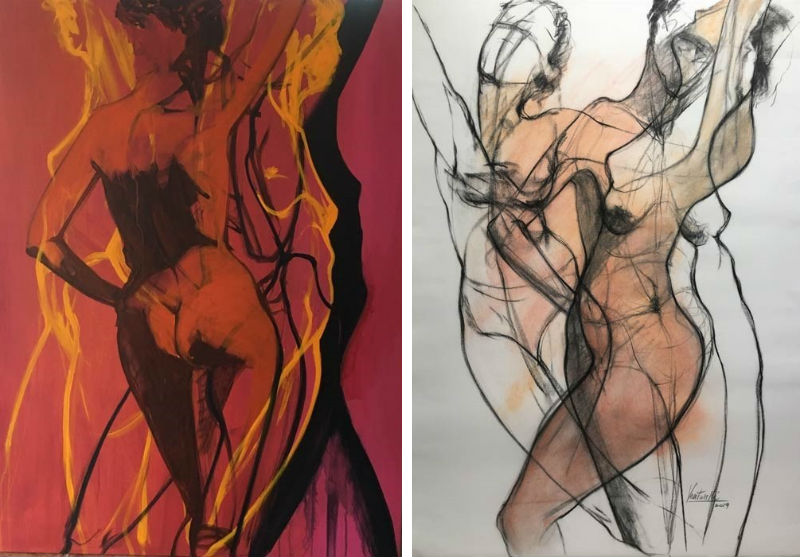
In Elizabeth Smith's Pulp review of Nora Venturelli's Vice Versa exhibition at WSG Gallery in 2017, she noted that it consisted of "large-scale mixed-media paintings of the human figure in motion, with gestural lines and overlapping forms suggesting the trajectory of the body through space."
That description is true for Venturelli's new WSG exhibition, Body of Work -- except for the "large-scale" part. In an interview published on wsg-art.com, Venturelli says she hasn't "had the time to work on bigger pieces these past two years. Therefore, I decided to show what I had been doing since my last solo at the gallery. Most of the work in this show is the result of short poses during weekly 3-hour sessions."
Ruth Leonela Buentello's "Yo Tengo Nombre" evokes the horrors immigrants face at the U.S.-Mexico border
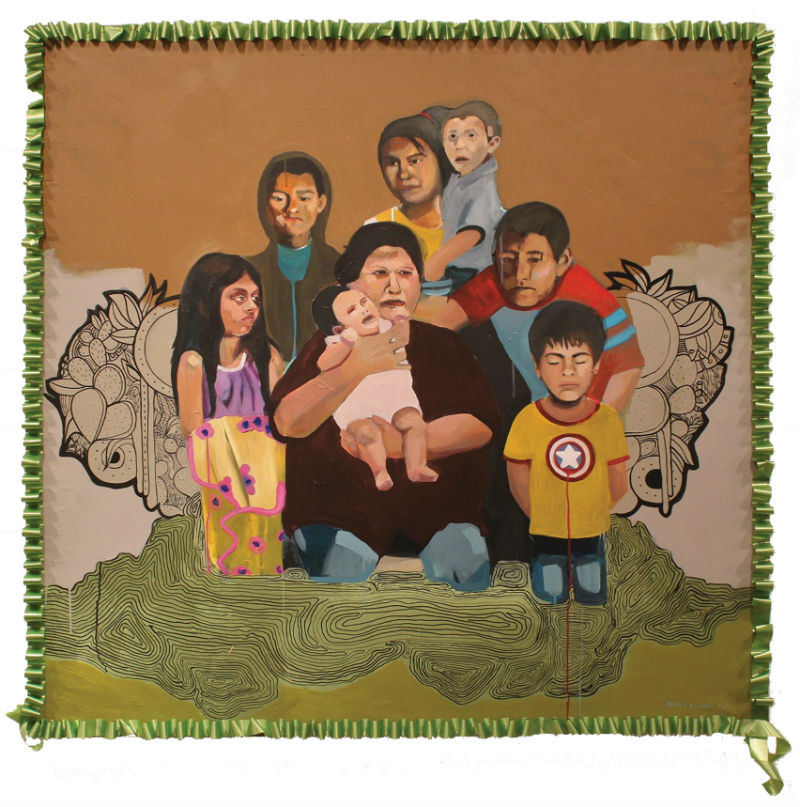
Ruth Leonela Buentello's Zero Tolerance series was inspired by the Trump administration's inhumane immigration policy at the U.S.-Mexico border and the subsequent mistreatment of migrant individuals as revealed by media investigations. Six paintings from the series will be displayed at the University of Michigan's Institute for the Humanities under the title Yo Tengo Nombre [I Have a Name] from September 19 to October 31.
While the San Antonio, Texas-based Buentello is an interdisciplinary artist, the works in Yo Tengo Nombre are all acrylic-on-canvas paintings. She asked members of her family to pose for the paintings, telling them to imagine what it would be like if they were in the position of these migrants. "Family and immigration enforcement are personal to many of us with migrant roots," Buentello said in a press release and she tried to capture the terror in her relatives' faces as they acted out moments that immigrants deal with every day.
Buentello, the 2019 Efroymson Emerging Artist in Residence, will talk with curator Amanda Krugliak during the opening reception on September 19, 5:30-7 pm.
Below is a sneak peek at the paintings.
Rachel DeWoskin's "Banshee" follows a woman exploring impulses and freedom after a medical scare

Rachel DeWoskin's Banshee is a novel about Samantha Baxter, a woman who faces a serious medical diagnosis and casts about for meaning while acting out in ways inconsistent with the life she has lived so far. She crosses lines in her job as a professor and her roles as wife and mother. Through it all, she recognizes the incongruencies of her actions, but she does not just plow ahead disrupting her middle-aged life; instead, she both makes her choices and contemplates how they unfold.
While her actions appear extreme, ranging from sleeping with a student to alienating her husband, Samantha does not leave her life and home. Her defiance centers on how she acts within her existing family and professional relationships. Samantha says what she wants to, unapologetically follows her impulses, and lets the consequences unfold. Accordingly, the prose consists of her first-person narration of her experiences and perspective as she transforms and reacts to her major health problem and to how she feels in new situations. The plot becomes about what she does or doesn’t do, what she says or doesn’t say, and what she thinks and feels about all of it.
Writer, poet, and Ann Arbor native DeWoskin previously acted in a Chinese soap opera and now teaches at the University of Chicago. She will speak about and sign Banshee at Literati Bookstore on Monday, September 9, at 7 pm. Beforehand, I interviewed her about her writing and new novel.
Brazilian mandolinist Danilo Brito returns to Ann Arbor with a new album and the history of choro at his fingertips

Brazilian mandolin wizard Danilo Brito is returning to the Metro Detroit area for what now annual performances in Ann Arbor (September 1 at Kerrytown Concert House), the Detroit Institute of Arts (August 30), and the GlasSalon in the Toledo Museum of Art (August 29). Brito (mandolin and tenor guitar) will be joined by Carlos Moura (7-string guitar) and Guilherme Girardi (6-string guitar).
Brito's new album, Da Natureza das Coisas (The Nature of Things), is bookended by two important works of Heitor Villa-Lobos, closing with "Melodia Sentimental" and opening with "Chôros No. 1 (Chôro típico Brasileiro)," which was composed for guitar in 1920 in tribute to composer Ernesto Nazareth. Villa Lobos grew up among choro musicians and said that the soul of Brazilian people is found in choro. Many classical guitarists play this work, but Brazilians such as Turíbio Santos play it with a distinctive verve absent in the others. Brito takes this a step further -- arranging the work for his mandolin in the lead voice with two guitars carrying the others. The bright, clarion sound of his mandolin riding the group's Brazilian drive leaves Brito thinking that it would make Villa Lobos smile.
"Chôros No. 1 (Chôro típico Brasileiro)" sets the tone for the album which journeys through composers venerated and new. Works of Garoto and Jorge Santos are mingled with newcomers Brito, Penezzi, and Arante.
Brito's U.S. booking agency, Musica Extraordinaria, is based in Ann Arbor and its leader, Michael Grofsorean, conducted an interview with the Brazilian mandolinist. (For even more Brito, Pulp editor Christopher Porter interviewed him before his April 1, 2017, appearance in Ann Arbor.)
Four emotionally charged works by Egon Schiele come to UMMA
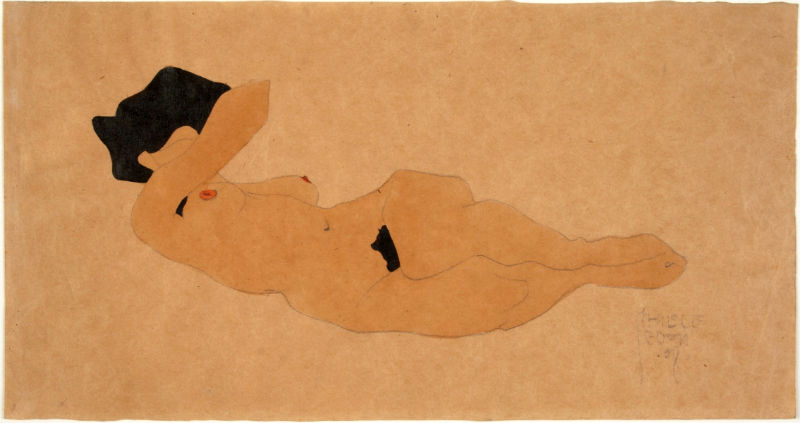
University of Michigan Museum of Art’s Connector Gallery frequently displays new acquisitions to the public. Recently, UMMA received four works by early 20th-century Austrian artist Egon Schiele. These four works include pencil drawings and paintings that convey the unconventional figural style for which Schiele is well-known.
Schiele’s figural works make up the majority of his oeuvre, and these gifted artworks represent his investigations into the human figure, each featuring a nude female, sometimes posed with accessories such as jewelry, stockings, or shoes.
The four pieces were donated to UMMA's permanent collection by retired University of Michigan professors Frances McSparron and the late Ernst Pulgram. These four works by Schiele represent a small portion of UMMA's collection of Austrian and German Expressionist works, many of which the professors later donated to the museum.
Tagging the Spirit World: The Kelsey Museum explores "Graffiti As Devotion Along the Nile"

The best-known graffiti in Ann Arbor is in an alley off East Liberty.
But through March 29, 2020, the most important graffiti will be at the University of Michigan Kelsey Museum of Archaeology.
Graffiti As Devotion Along the Nile: El-Kurru, Sudan explores the practice of carving a picture into the walls of pyramids and temples as an act of religious ritual during the ancient Kush period, which was ruled from the capital of Meroe (300 BCE to 300 CE), a city along the Nile that's around 100 miles north of modern-day Khartoum. The exhibition displays a series of graffiti discovered during a Kelsey Museum archaeological field project on a pyramid and in an underground temple at the site of El-Kurru.
Co-curator Geoff Emberling -- an associate research scientist at the Kelsey Museum and co-director of the International Kurru Archaeological Project -- says the graffiti includes Kush symbols such as the ram, which represents the local form of the god Amun, and a long-legged bowman who symbolized Kushite prowess in archery. There are also intricate textile designs, as well as animals: horses, birds, camels, and giraffes. A press release states: "The most common marks are small round holes gouged in the stone -- by analogy with modern practices, these are likely the areas where temple visitors scraped the wall of the holy place in order to collect powdered stone that they would ingest to promote fertility and healing."
False Figures make no-frills, minimalist Americana on their self-titled debut
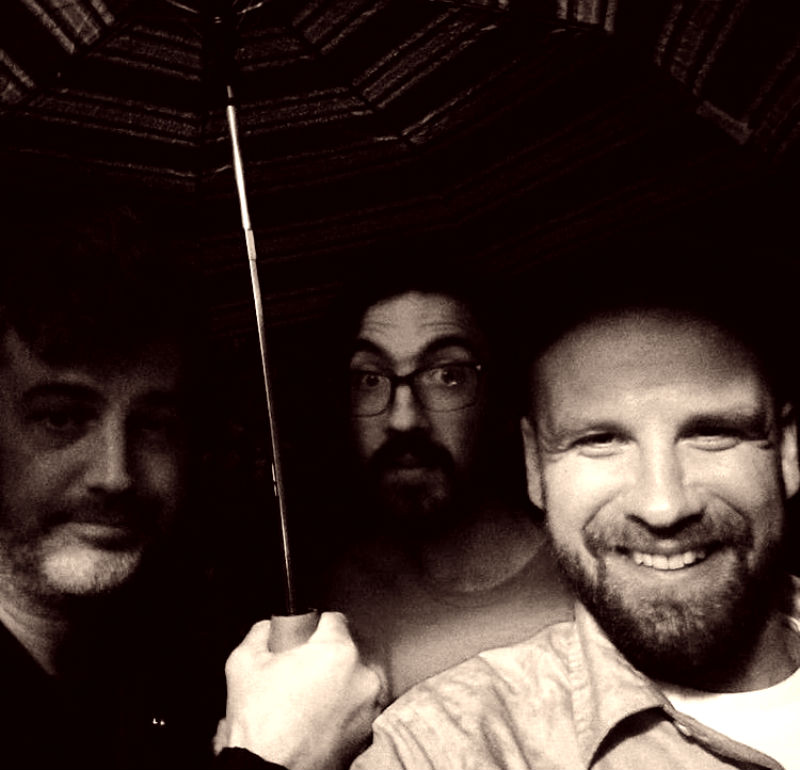
There’s some irony in the name of the Ypsilanti band False Figures. Taken from a line in one of their songs, “Red Herring,” the name refers to fake idols.
But False Figures’ sound is anything but fake. The band is low-fi and low-profile (their social media presence is limited), creating a soulful, warm sort of Americana music that sounds like it might be played by friends around a campfire.
The core band has mostly consisted of Jim Cherewick, vocals, guitar, harmonica, and violin; Joel Parkkila, vocals, guitar and more; and Jason Lymangrover, bass and guitar. More recently, Stefan Krstovic has joined the band as the regular drummer. All the members have experience in other local bands including Human Skull, Best Exes, Congress, and Hydropark.
Their self-titled debut album is an accessible, engaging listen. The no-frills sound is well suited to the songs, which tend to be short and to the point -- one highlight on the album, “Matchbox,” gets the job done in just over a minute and a half. There’s a thoughtfulness to the lyrics, though, especially in songs like “Stay On” and “Out of Time.”
A second album is already in the works. And although the band has been primarily a studio project, they will play a live date at Ziggy’s in Ypsilanti on Wednesday, August 28 with Simon Joyner, Raw Honey, and Idle Ray. The show is being produced by Fred Thomas' Life Like Tapes.
The band recently agreed to answer a few questions via email.
Ann Arbor Art Center's "The Instructor Show" showcases the talents who nurture future talents

Befitting an exhibition made up of works from 18 of its teachers, The Instructor Show at the Ann Arbor Art Center offers a diverse range of media, including painting, sculpture, jewelry, printmaking, drawing, fiber arts, and encaustic. The exhibit is a fine display of the talent behind the multitude of programs, events, and classes the Art Center offers.
Jennifer Belair-Sakarian is an artist who was raised and educated in the Midwest. Her works often center on stream of consciousness, featuring imagery related to natural environments, relationships, and human emotions. Belair-Sakarian employs collage, printmaking, painting, and drawing in her practice. Two works in the gallery represent the range of media in her repertoire, including a mixed-media monoprint and a watercolor with gloss gel medium. Belair-Sakarian is inspired by moments from everyday life, where she later synthesizes real and imagined spaces into her visual work.
Pulp Bits: A Roundup of Washtenaw County Arts & Culture Stories, Songs & Videos
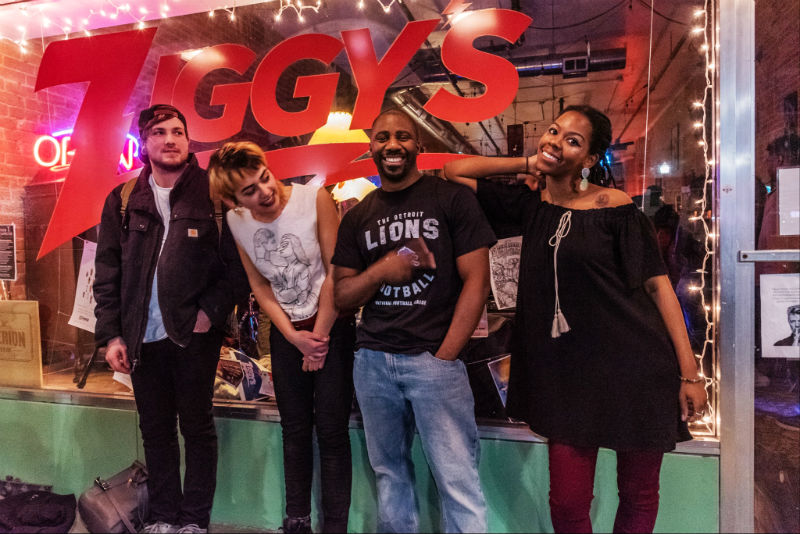
A round-up of arts and culture stories featuring people, places, and things in Washtenaw County, whether they're just passing through or Townies for life. Coverage includes music, visual art, film & video, theater & dance, written word, and Pulp life (food, fairs, and more). If you're reading this in the future and a story link is dead, look up the URL on web.archive.org; we've cached every post there.
This is the vacation-catch-up edition of Pulp Bits, so we have links going back to late June -- a true smorgasbord of culture news. Feast!


































